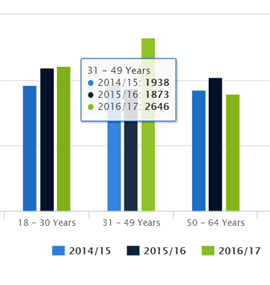We all want valuable data, right? But, getting it isn’t always as easy as asking for it. Adding up the numbers and creating charts has value, but data is so much more than just a compilation of how many people you’ve served, or the number of meals provided. The purpose of your data is to tell the story of who you are serving, and should also intentionally illustrate how much your hard-earned dollars are impacting the community.
So how do we get there?
Communicating your analysis of the data you’ve collected is much like sharing a story with plots, characters, and narrative flow; there may even be a lesson at the end. For a story to be effective and easily understood, it must be well thought out. The narrative must be organized with a clear plot, timelines you can follow, and characters that are identifiable.
If you’re struggling to share the story of your data, it may be time to do a little dissection and reevaluation of the story framework. Ask yourself these questions: what elements are missing? Can I identify and use key data points that relate to the big picture?
This is where evaluation of your current data is useful! It is important to know what you’re starting with before deciding what you need and it can be valuable to explore whether or not you are collecting data that provides insight. Do your indicators and outcomes need to be reevaluated; or even developed further? Are your measurement tools useful?
Begin at the end
Consider where you want to be in a year. Data plays a large role in developing strategy, determining funding levels, assessing community need, and communicating impact. Thus, when thinking backward, it is wise to consider the story you want your data to tell, both in the first edition and second editions. Will the information be valuable over time? In two years, will you be able to identify the “deeper” needs of an individual and the community? Will you be able to identify where your efforts have been effective and where you can evolve?
Just as knowing how the data will be used is important, so is understanding the purpose of each data point. Consider having a conversation internally about your current data and the tools used to collect it; this can be a useful way to truly SEE your data as it is now and how it could be.
For more information about Seabrooks products and services, please contact sales@seabrooks.com.
